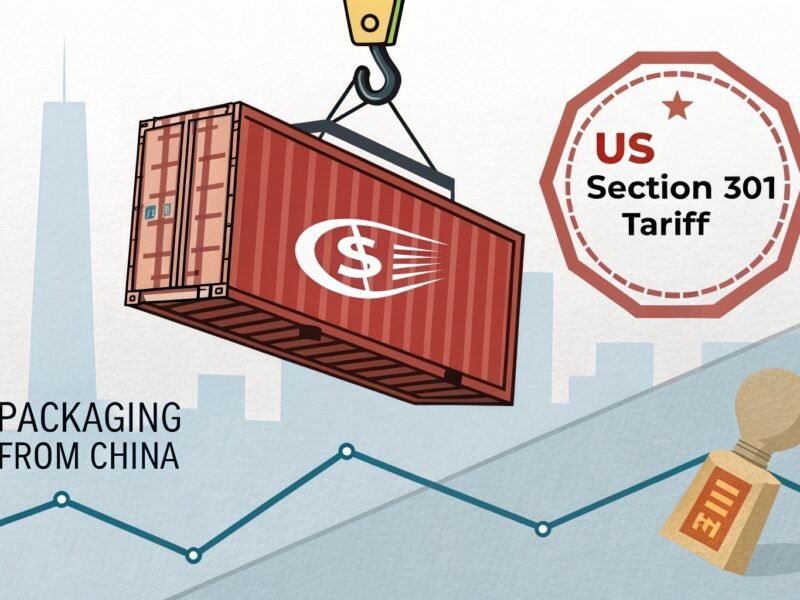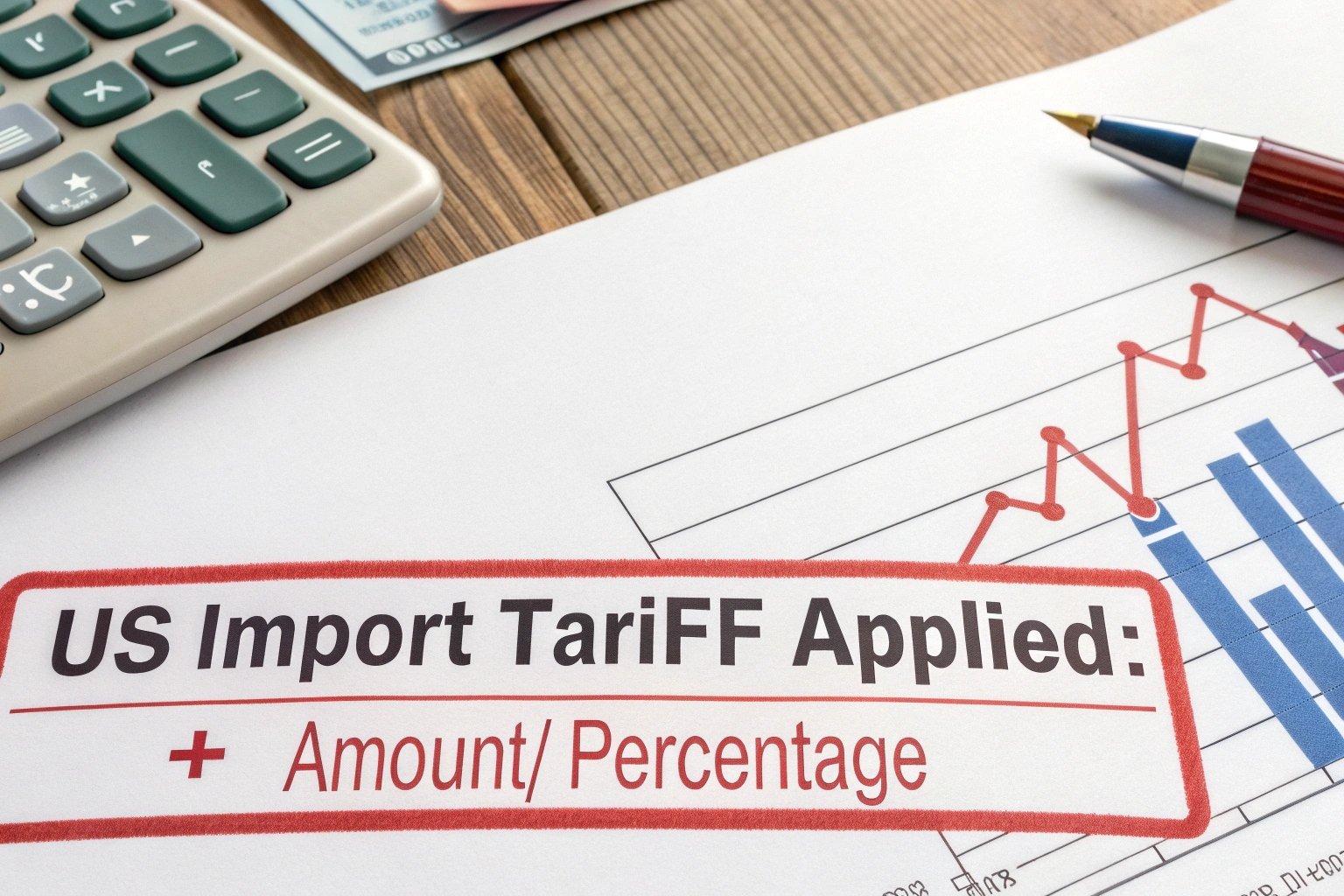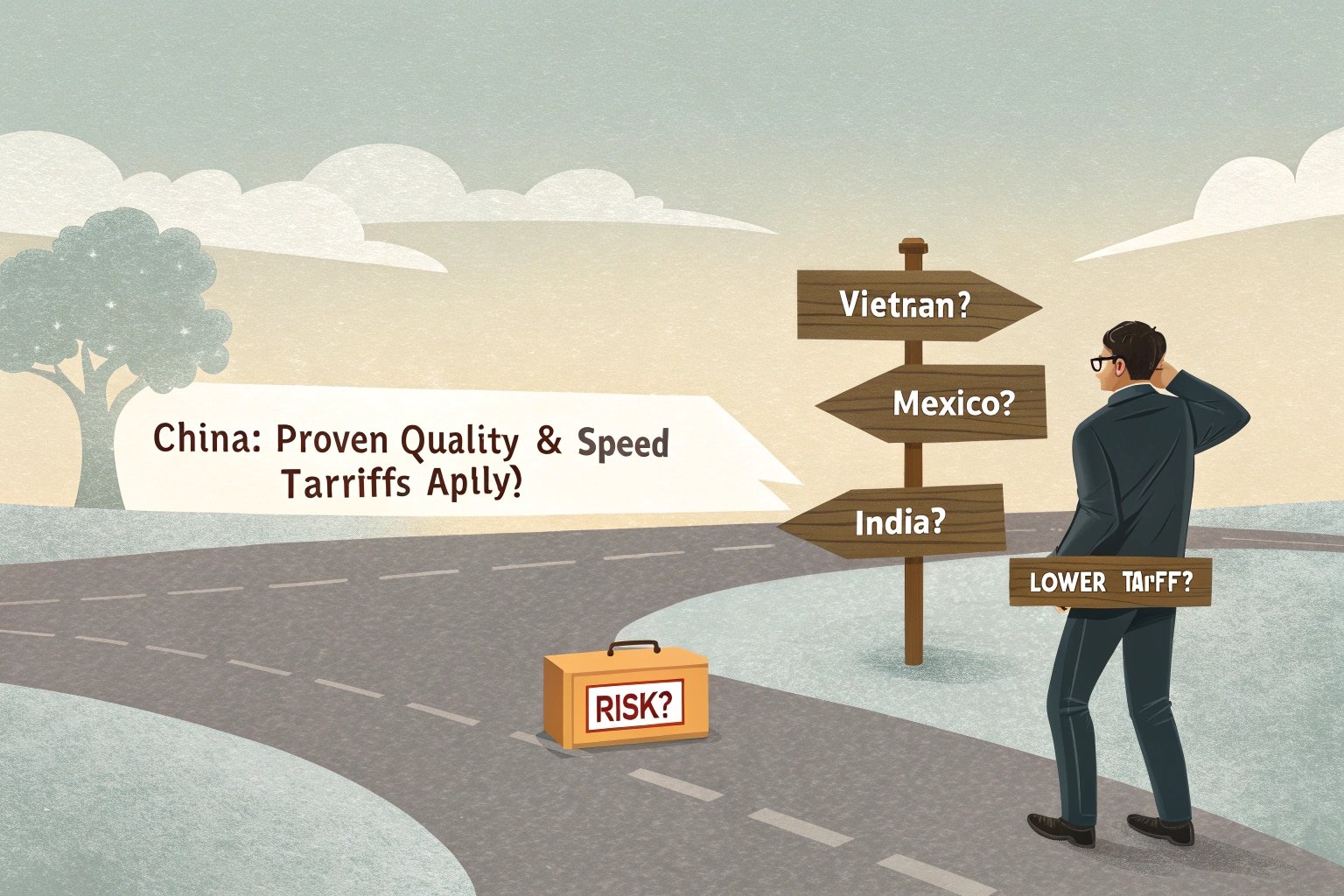
Are rising packaging costs squeezing your margins? Feeling uncertain about supply chains due to US tariffs? These trade policies create real challenges for businesses relying on imported packaging.
High US tariffs, especially Section 301 duties on Chinese goods, directly increase the landed cost of imported packaging and raw materials like steel/aluminum. This pressures US brands to absorb costs, raise consumer prices, find alternative suppliers, or redesign packaging.
The ripple effects of these tariffs are complex, impacting everyone from manufacturers like us at Finer-Packaging in China to brand owners and end consumers in the US. Let's dive deeper into how these policies are reshaping the industry.
How Do Tariffs Directly Increase Packaging Costs?
Seeing your quotes for custom boxes suddenly jump? Wondering exactly where that extra expense is coming from? Tariff confusion can make budgeting and planning incredibly difficult.
Tariffs act as an import tax, levied by US Customs on specific goods (like packaging) when they enter the country from places like China. This tax is added directly to the cost, increasing the final price paid by the importer.

Let's break down how this works. When we, Finer-Packaging, manufacture custom paper or plastic packaging for a US client, the price we quote is typically the factory price (EXW or FOB1). The US buyer is responsible for shipping, insurance, and import duties, including any tariffs. These tariffs are calculated as a percentage of the goods' declared value.
Understanding Section 301 Tariffs
The most significant tariffs impacting packaging from China are the Section 301 tariffs2. These were implemented by the US government citing trade imbalances and intellectual property concerns. Many categories of goods imported from China, including various types of paper boxes, plastic containers, labels, and bags, fall under these tariffs. The tariff rates have varied but have often been substantial (e.g., 7.5%, 15%, or even 25% on top of any regular duties).
- Finding Your Rate: The exact tariff rate depends on the specific Harmonized Tariff Schedule (HTS) code3 assigned to your product. This code classifies the product for customs purposes. Identifying the correct HTS code is crucial for determining the applicable tariff.
- Landed Cost Impact: If a product has a 25% Section 301 tariff, the importer pays an extra 25% of the product's value to US Customs. This significantly increases the "landed cost"4—the total cost of getting the product from our factory door to the buyer's warehouse door.
Impact of Material Tariffs
It's not just finished packaging products from China that are affected. Tariffs imposed by the US on raw materials like steel and aluminum (under Section 232, based on national security concerns) also ripple through the packaging industry.
- Increased Component Costs: These tariffs raise the cost of aluminum cans, steel containers, metal closures, foil components, and even the steel used in cutting dies for paperboard packaging, regardless of where the final packaging product is assembled. Even US domestic packaging manufacturers might face higher costs if they use imported steel or aluminum, or if domestic material prices rise due to reduced import competition.
The Cascade Effect
These tariff costs don't just disappear. They tend to cascade through the supply chain:
- Importer Pays Tariff: The US brand or importer pays the tariff duty to Customs.
- Increased Product Cost: This increases the brand's cost of goods sold (COGS).
- Pricing Decisions: The brand must decide whether to:
- Absorb the cost (reducing their profit margins).
- Pass the cost to distributors/retailers.
- Pass the cost to the end consumer via higher shelf prices.
- Seek cost reductions elsewhere (e.g., simplifying the package).
Here’s a simplified example:
| Cost Component | Pre-Tariff Scenario | With 25% Tariff Scenario |
|---|---|---|
| Factory Price (FOB) | $1.00 | $1.00 |
| Shipping & Insurance | $0.10 | $0.10 |
| Base Duty (Example) | $0.03 (3%) | $0.03 (3%) |
| Section 301 Tariff | $0.00 (0%) | $0.25 (25% of $1.00) |
| Total Landed Cost | $1.13 | $1.38 |
As you can see, the tariff adds a significant direct cost. At Finer-Packaging, while we don't control US tariffs, we work with clients to provide clear cost breakdowns and explore customization options that might offer better value, helping mitigate these external pressures where possible.
Are Tariffs Shifting Packaging Production Away from China?
Considering suppliers outside China just to avoid tariffs? Worried you might sacrifice quality, speed, or expertise if you move? This supply chain uncertainty is a major consequence of tariff policies.
Yes, US tariffs have definitely pushed some American companies to explore sourcing packaging from alternative countries like Vietnam, Mexico, India, or others in Southeast Asia. However, China retains significant advantages in scale, infrastructure, speed, and the established expertise of manufacturers like Finer-Packaging.

The imposition of tariffs created a strong financial incentive for US importers to look for ways to avoid paying them. One obvious strategy is to find suppliers in countries not subject to these specific tariffs. This has led to a noticeable trend of supply chain diversification, often called a "China Plus One" strategy, where companies maintain sourcing in China but also develop relationships elsewhere.
The Push for Diversification
Companies started actively investigating and sometimes moving production orders for packaging to countries perceived as lower-cost alternatives or, crucially, tariff-free entry points into the US.
- Vietnam: Became a popular choice, particularly for items like paper bags and some types of boxes, due to geographic proximity and developing manufacturing capabilities.
- Mexico: Offers advantages due to the USMCA trade agreement (replacing NAFTA) and significantly shorter shipping times to the US. It's strong in certain plastics and corrugated packaging.
- India: Has a large manufacturing base, particularly strong in flexible packaging and labels.
- Other Southeast Asian Nations: Countries like Thailand, Malaysia, and Indonesia also saw increased interest.
Challenges in Sourcing Elsewhere
However, shifting packaging production isn't as simple as just finding a new factory. Brands encountered several challenges:
- Scale and Capacity: Few countries can match China's sheer production capacity and the breadth of its supplier ecosystem. Finding factories elsewhere that can handle large volumes or complex requirements can be difficult.
- Infrastructure: China has highly developed port infrastructure, logistics networks, and raw material supply chains specifically supporting the packaging industry. Replicating this efficiency elsewhere takes time.
- Expertise and Quality Control: Decades of experience mean Chinese manufacturers often have deep expertise in specialized printing techniques, finishes, and complex structures. Ensuring consistent quality from new suppliers in different regions requires significant vetting and oversight.
- Lead Times: While Mexico offers faster shipping, setting up new relationships, developing samples (like our Digital or Pre-production samples), and ramping up production in other Asian countries can initially lead to longer overall project timelines compared to experienced Chinese partners.
- Rising Costs Elsewhere: As demand shifted, costs in some alternative countries also started to rise, narrowing the initial cost advantage driven by tariff avoidance.
China's Enduring Strengths
Despite the push for diversification, China remains a powerhouse in packaging manufacturing. Its advantages include:
- Integrated Ecosystem: A vast network of material suppliers, equipment manufacturers, skilled labor, and logistics providers all focused on packaging.
- Speed and Efficiency: Ability to handle large orders with relatively fast turnaround times (our standard is 10-15 business days for production).
- Advanced Capabilities: Investment in modern printing and finishing technologies.
- Experience: Deep understanding of export requirements for markets like North America and Europe.
Therefore, while tariffs have definitely encouraged diversification and some production has shifted, many brands find that China, and experienced suppliers like Finer-Packaging, still offer the best combination of cost, quality, speed, and capability, especially for complex or high-volume custom packaging needs. The situation remains dynamic, influenced by ongoing trade negotiations and global economic factors.
How Are US Brands and Consumers Affected by Packaging Tariffs?
Feeling the squeeze from rising costs for everyday goods? Wondering if those tariffs on imports are playing a part in the price hikes you see? The impact definitely trickles down.
US brands face a tough choice: absorb the tariff costs (hitting profits), pass them onto consumers through higher prices, or try to redesign packaging using different materials or simpler designs to lower costs or potentially avoid tariffs.

The tariffs imposed on imported packaging materials and finished goods create a direct financial burden primarily shouldered, at least initially, by the US importer – typically the brand owner or a large retailer. Their reaction to this burden significantly impacts the market and ultimately the end consumer.
The Brand's Dilemma: Absorb, Pass On, or Redesign?
When faced with a sudden increase in the landed cost of their packaging due to tariffs, brands have several options, none of them ideal:
- Absorb the Cost: Companies might choose to maintain their selling prices and accept lower profit margins. This is more likely for brands in highly competitive markets where raising prices could mean losing market share, or for products with already high margins. However, sustained cost increases make this difficult long-term.
- Pass the Cost to Consumers: The most common response, especially for widespread tariffs, is to increase the selling price of the final product. This directly impacts consumers, contributing to inflation. The visibility of this depends on the product – a small increase on a low-cost item might be less noticeable than on a larger purchase.
- Redesign Packaging: This is a strategic response. Brands might work with suppliers like us to:
- Simplify: Reduce complexity, perhaps moving from a multi-piece structure to a simpler fold-up box.
- Change Materials: Switch to a material potentially not subject to tariffs or one that is inherently cheaper (though this might affect perceived quality or protection). For example, moving from a rigid box to a folding carton if feasible.
- Optimize Size: Reduce the physical size of the packaging to save on materials and potentially shipping costs ("right-sizing").
- Reduce Finishing: Eliminate costly finishes like foil stamping or spot UV if they aren't essential to the brand image.
- Negotiate with Suppliers: Brands might try to negotiate lower base prices with suppliers to partially offset the tariff, although this is often difficult if the supplier's own material costs are also rising.
Packaging Redesign Strategies in Response to Tariffs
We've seen clients at Finer-Packaging become more focused on cost-engineering5 due to tariff pressures. This might involve:
- Material Specification Review: Analyzing if a slightly lighter paperboard grade could still provide adequate protection.
- Structural Optimization: Redesigning the dieline for minimal material waste.
- Printing Efficiency: Consolidating print runs or sometimes reducing the number of colors used, although CMYK process printing is already quite efficient for full color. Opting for digital samples first before committing to more expensive pre-production samples can also help manage development costs.
The End Consumer Pays
Ultimately, much of the cost associated with tariffs often finds its way to the end consumer through higher prices on store shelves. This impacts purchasing power and can influence buying decisions. Consumers might switch to lower-priced alternatives or reduce consumption of certain goods if prices rise too sharply. The packaging cost is embedded within the final product price, so consumers may not realize tariffs are a contributing factor, but the effect is real.
The tariff situation creates a more challenging environment for US brands, demanding greater focus on supply chain management, cost control, and potentially impacting packaging innovation if budgets are redirected to cover tariff expenses rather than investing in more premium or sustainable packaging features.
Conclusion
High US tariffs undeniably raise costs for imported packaging, impacting brand profitability and leading to higher consumer prices. They've spurred supply chain diversification but China's manufacturing strengths remain significant for companies like Finer-Packaging.
Learn what these common international trade terms mean regarding costs and responsibilities for buyers and sellers. ↩
Understand the specifics of Section 301 tariffs, why they were imposed, and which goods are impacted. ↩
Learn what HTS codes are and how to classify your specific packaging product to find its correct tariff rate. ↩
Understand how to calculate the total cost of imported goods, including shipping, duties, and tariffs like Section 301. ↩
Learn practical methods for reducing packaging costs through design and material choices, especially under tariff pressure. ↩






